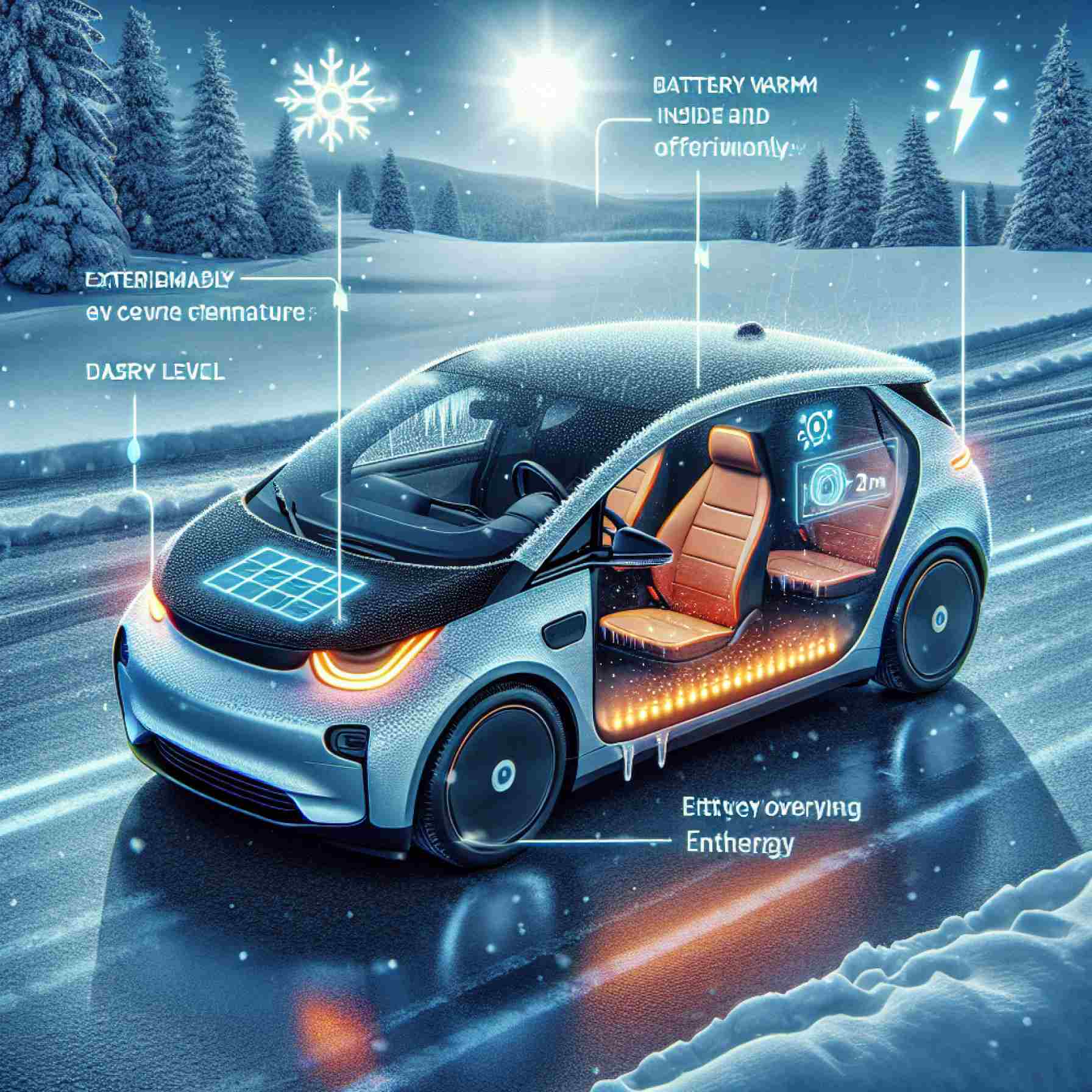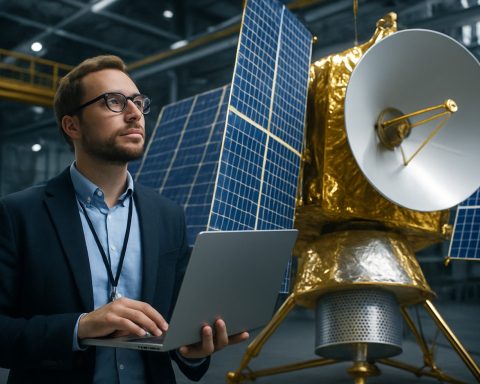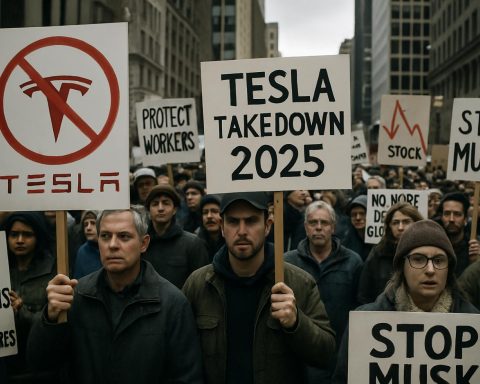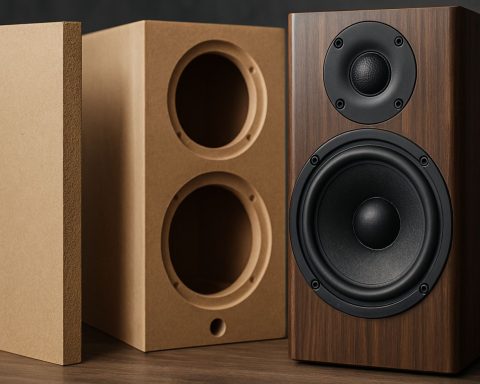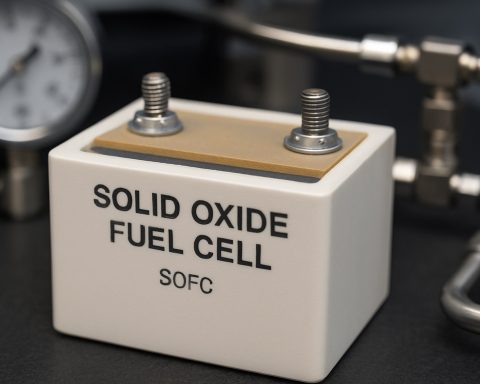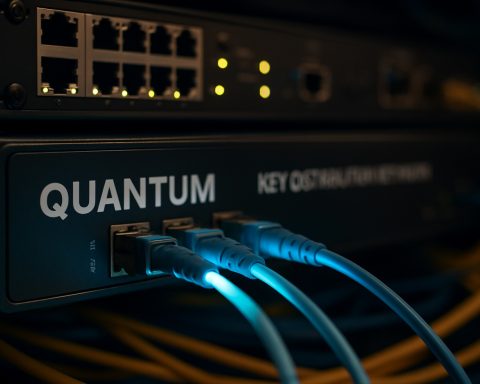- The University of Michigan has pioneered a transformative battery technology aimed at revolutionizing the electric vehicle (EV) industry in cold climates.
- This new battery can charge up to 500% faster even at temperatures as low as 14°F (-10°C), thanks to an innovative manufacturing process.
- Key to the breakthrough is a 20-nanometer thick glass-like coating made from lithium borate-carbonate, which prevents obstacles that slow ion movement.
- The technology also features 40-micron wide channels in the graphite anode to facilitate swift ion distribution, addressing the EV “trilemma” of charging speed, range, and cold-weather performance.
- This advancement could alleviate range anxiety among potential EV buyers, addressing declining interest in EVs due to cold-weather concerns.
- The technology can be integrated into existing battery plants, enhancing its appeal and accelerating the path towards a cleaner, more sustainable future.
A kaleidoscope of snowflakes flutters around Ann Arbor, burying streets under a pristine white layer. In contrast, the electrically charged atmosphere inside the University of Michigan’s labs speaks of innovation that could reshape the electric vehicle (EV) industry. Engineers here have conjured a transformative battery technology, designed not just to survive in the cold but to thrive. At the heart of this breakthrough lies a novel manufacturing process that promises to charge EV batteries a staggering 500% faster, even when the mercury plunges to a daunting 14°F (-10°C).
Precision and ingenuity come together in an intimate embrace of science and technology. Imagine lithium ions as tiny dancers, waltzing between the electrodes of a battery. In conventional batteries, the dance is slowed to a crawl by the labyrinth of obstacles encountered in freezing temperatures, turning eager enthusiasts into exasperated skeptics. The movement is impeded by thick, clumsy layers that harden like impenetrable butter in the cold.
Yet, the team, led by Neil Dasgupta, an associate professor of mechanical engineering and materials science, has deftly side-stepped this hurdle. They crafted slender, glass-like coatings only 20 nanometers thick from lithium borate-carbonate—so fine, they are invisible to the human eye but potent in their ability to repel that troublesome layer on the electrode’s surface. This seemingly small alteration unlocks channels previously blocked, allowing the ions to rush unhindered, accelerating the charging process dramatically.
This delicate glassy sheath is married with microscopic channels blasted into the graphite anode—each 40 microns wide—serving as thoroughfares for the ions, ensuring swift and even distribution. Together, these features are the secret to solving what Dasgupta terms the “trilemma” of EVs: achieving fast charging, maximizing range, and minimizing the delays caused by cold weather.
Such innovations could quell the genuine fears harbored by the dwindling numbers of potential EV buyers, a decline captured vividly in a recent AAA survey. Interest in electric vehicles skidded from 23% of U.S. adults expressing interest for their next car in 2023 to a mere 18% in 2024. Many remain skeptical, especially during winter when range anxiety grips hardest, exacerbated by the slow nature of cold-weather charging.
The promise of a future where recharging an EV takes mere minutes instead of half an hour or more, even in the dead of winter, is tantalizingly close. It’s a vision anchored in the real possibility of retrofitting existing battery plants with this revolutionary technology—no enormous overhauls necessary, just precision tweaks aligned with Dasgupta’s vision.
As Arbor Battery Innovations steps forward with these insights, the path seems clear; patent applications are filed, and commercialization efforts gain momentum. This synergy between research and real-world application embodies the hope of not just increased EV adoption but more broadly, a cleaner, more sustainable future. As the cold grips tighter, innovation burns brighter, showing that even in the frostiest conditions, progress is inexorable.
Revolutionary Battery Tech Could Supercharge EV Adoption Even in Cold Climates
The Cold Weather Challenge for EV Batteries
Electric vehicles (EVs) have long faced a significant obstacle: efficiency in cold climates. Conventional batteries lose effectiveness as temperatures drop, leading to increased charging times and reduced range. This is primarily due to thick layers that form within the battery, impeding the movement of lithium ions. Despite growing momentum behind electric vehicles, this “cold-weather effect” is a major deterrent for potential buyers, causing interest in EVs to wane during harsh winters.
Breakthrough Battery Technology at the University of Michigan
Researchers at the University of Michigan, led by Neil Dasgupta, are on the brink of transforming the EV landscape with their development of a revolutionary battery design that maintains high efficiency even at 14°F (-10°C). Key to this innovation is a novel manufacturing process that dramatically accelerates the charging process by 500% even in freezing climates.
How It Works
– Nano Glass Coating: The team engineered a 20-nanometer-thick glass-like coating made from lithium borate-carbonate. This coating prevents the formation of obstructive layers on the electrode surface, ensuring free movement of lithium ions.
– Microscopic Channels: By creating 40-micron-wide channels within the graphite anode, ions can travel more smoothly, decreasing the impedance typically experienced when temperatures drop.
These adjustments not only expedite charging times but also enhance the EV’s range and lessen the impact of cold-weather challenges—culminating in what Dasgupta refers to as addressing the “trilemma” of EV function: charge speed, range, and cold-weather performance.
Real-World Use Cases and Market Trends
With patent applications already in progress, this technology is on the cusp of commercialization. Retrofitting existing battery plants rather than overhauling them entirely means that widespread adoption could happen with relative ease. Arbor Battery Innovations is poised to lead this charge.
Pros and Cons Overview
Pros:
– Faster Charging: Drastically reduced charging times, even in cold weather, are expected to alleviate range anxiety, making EVs more appealing to a broader audience.
– Improved Range: Enhanced battery efficiency means longer driving distances between charges.
– Sustainable Vehicle Evolution: Promotes larger EV adoption, supporting environmental sustainability goals.
Cons:
– Initial Costs: Higher initial manufacturing and retrofitting costs could impact early pricing.
– Complexity in Production: This novel technology requires high precision, which may slow early rollout.
Industry Predictions and EV Market Forecast
As this technology moves toward mass production, its potential to reshape the EV market is enormous. With increased efficiency, EV adoption rates could climb again, reversing the slight downturn seen in recent surveys. This move toward energy-efficient transportation aligns with a global push for reduced carbon emissions.
Expert Opinions
Industry experts suggest that if implemented successfully, this breakthrough could become a standard in EV manufacturing and a vital part of the next generation of energy-efficient vehicles.
According to Neil Dasgupta, “This technology not only addresses functional challenges but could revolutionize how we perceive electric transportation, especially in countries with colder climates.”
Actionable Tips and Recommendations
1. EV Owners: Consider charging infrastructure that may incorporate this technology soon, reducing charging times.
2. Potential EV Buyers: Stay informed about innovations in EV technology to make more sustainable purchasing decisions.
3. Manufacturers: Explore partnerships with research institutions like the University of Michigan to stay at the forefront of new battery technologies.
For more insights into the future of EV technology and related innovations, visit the University of Michigan.
In conclusion, this breakthrough in battery technology out of the University of Michigan could finally conquer the cold-weather conundrum for EVs, paving the way for more widespread adoption and a greener future.
